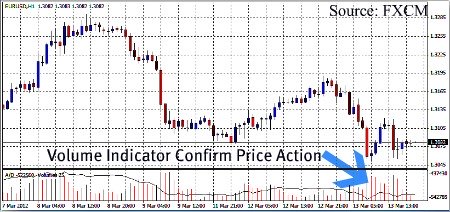
6 Tenets of Dow Theory To Learn the Foundation of Technical Analysis
The Dow Theory forms the foundation of what we know today as technical analysis. Charles Dow and and his partner Edward Jones founded Dow Jones & Company in 1882. Dow proposed his theories first around a century ago in a series of editorials for the Wall Street Journal.
He applied his analytical approach to stock market averages namely, the Industrial and the Rails. Charles Dow's contribution to the technical analysis is often compared to Sigmund Freud's contribution to the field of psychoanalysis.
The Dow Jones Industrial Average, also called the Industrial Average, the Dow Jones, the Dow 30, or simply the Dow, is a stock market index that shows how 30 large, publicly owned companies in the U.S. have traded during a standard trading session in the stock market.
Around 1884, in order to provide a good indication of the economic health of the countury, Dow formulated the first stock market average composed of the closing price of eleven stocks: nine railroad compaines and two manufacturing firms.
Later in 1897 he extended his list to a 12 stock industrial index and a 20 stock rail index. By 1928 the industrial index had grown to include 30 stocks, the number at which it stands today. Along with the NASDAQ Composite, the S&P 500 Index and the Russell 2000 Index, the Dow is among the most closely watched U.S. benchmark indices.
SIX BASIC TENETS OF DOW THEORY
- The average discounts everything.
- The market has three trends.
- Major trends have three phases.
- The averages must confirm each other.
- Volume must confirm the trend.
- A trend in motion will likely remain in motion until it signals that it has definitely reversed.
1. The Average Discounts Everything
One of the basic premises of technical analysis is the idea that the market reflects every possible factors, and information that can possibly affect overall supply and demand.
While market can not forecast natural occurances such as: earthquake, storm, hurricane, and various other catastrophies, they quickly discount such events and almost immediately equate their affects into the price action.
In a nutshell, the sum and tendency of the transactions of the stock exchange represent the sum of all Wall Street's knowledge of the past, immediate and the future.
2. The Market has Three Trends
Dow's definition of trend still forms the foundation in today's most sophisticated computer trend analysis technology.
According to Dow the market has three trends: uptrend, downtrend, and sideways trend.
An uptrend is defined as a situation in which each successive rally closes higher than the previos rally high, and each successive rally low also closes higher than the previous rally low.
In a downtrend the reverse is true. That is to say, each successive lower peaks closes lower than the previous low.
In sideways trend, each successive peak and crest are about the same height.
Dow believed that the laws of action and reaction equally apply to the market just as thye do to the physical unvierse.
For instance, the market rallies to the top and there is a moderate decline followed by further gain to reach the highest figure.
Dow considered a trend to have three phases: primary, secondary and minor.
Primary trends lasts for a year, and possibly for several years.
Secondary trends are correction to the primary trend and lasts few weeks to few months. These intermediate corrections generally retrace any where between one-third and two-thirds of the previous trend and most frequently about half or 50% of the previous move.
The near term or minor trend is a fluctuation in intermediate or secondary trend and usually lasts about less than three weeks.
3. Major Trends Have Three Phases
According to the Dow Theory primary or major trends has three distinct phases: accumulation, public participation and distribution.
During an early accumulation phase only few informed and astute investors participate. For example: Warren Buffet would fit the description of an investor participating during accumulation phase.
The public participation phase occurs when business news improves. This is also the phase where technical trend traders begin to notice an emerging trend pattern and follow the trend.
The distribution phase is the last phase of the trend. It occurs when newspapers begin to paint, print and circulate rosier picture of the economic heath of the country. During this phase, the business news is bullish than ever, prices begin to advance rapidly, and the public flock to the market in anticipation of catching the trend. This is also when the astute investors who accumulated when no one wanted to participate starts to distribute or sell before any one else does.
4. The Averages Must Confirm Each Other
According to the Dow theory both the industrial and rail averages must move along the same direction to confirm either a bull or a bear market.
Around 1884 when Charles Dow first published his stock market averages in the form of the Wall Street Journal editorial, he created market averages composed of eleven stocks: nine railroad companies and two manufacturing (industrial) firms. Later the industrial index was extended to include 30 stocks which it stands today.
Dow considered a rally in the industrial averages should be accompanied by a rally in the railway averages too, thus confirming the bull market. According to this logic, industrial rally suggests manufacturing profits are up then it means consumer spending is up. This creates a chain of demand for goods so manufacturer's are producing more goods to fullfill the needs. In order to supply the goods, the manufacturer's must transport, in this case use railways as the mode of transporting goods to consumers.
In conclusion, an investor looking for a sign of improvement in manufacturing industries, should also cofirm the improvement at the performance of shipping companies like railways which was the major and preferred mode of transporting goods in Dow's time.
When these two indicies: industrial and the railroads index move in tandem then only one could confirm that a major trend is in place.
5. Volume Must Confirm The Trend
The Dow theory states volume should increase along with price in the direction of the major trend. Dow considered volume as a secondary yet important factor in identifying price signals.
Sophisticated volume indicators can be used to confirm price action.
 Example: Volume Indicator Confirm Price Action
Example: Volume Indicator Confirm Price Action
In the figure, the sharp rise in volume bar justify the price action movement.
6. A Trend In Motion Will Likely Remain In Motion Until It Signals That It Has Definitely Reversed
This tenets of the Dow theory relates a physical law to market movement. It is also considered the foundation of many trend following indicators.
It is a direct adaptation of Newtons First Law of motion which sates:
An object in a state of uniform motion tends to remain in that state of motion unless an external force is applied to it.
Since the technical analysis is more a form of an art rather than a pure science, many Dow theorists and technical analysts disagree as to when the market gives an actual reversal signal. In this scenario, "beauty lies in the eyes of beholder" is generally true.
SOME CRITICISMS OF THE DOW THEORY
The Dow Theory has performed remarkably well. According to the Barrons, from 1920 to 1975 Dow Theory signals captured 68% of the moves in the industrial and transportation averages and 67% of those in the S&P 500 Composite index.
On average, Dow theory misses approximately 20-25% of the market movement. So many traders criticize that the Dow Theory signal occurs too late to participate.
But if we throw some light to Dow's original conception of the Industrial and the Railways Averages then we know his intention was more to determine the economic health of the country and recognize the emgergenc of major bull and bear markets.
The Dow theory has well served Dow's ingenious vision for this matter. Those who criticize the Dow theory can not catch actual market tops and bottoms lack the basic foundation of the the trend-following philosophy.
In conclusion, the Dow Theory forms the basic foundation of the modern day technical analysis.
Dow's original theory, though Dow himself never intended for, is adapted in the modern day technical analysis ranging from the standard definition of a trend, the classification of a trend into three categories and phases, the principles of confirmation and divergence, the interpretation of volume and the use of percentage retracements to name a few.
-
Return to
- Technical Analysis
- Dow Theory
- Home









Have your say about what you just read! Leave me a comment in the box below.